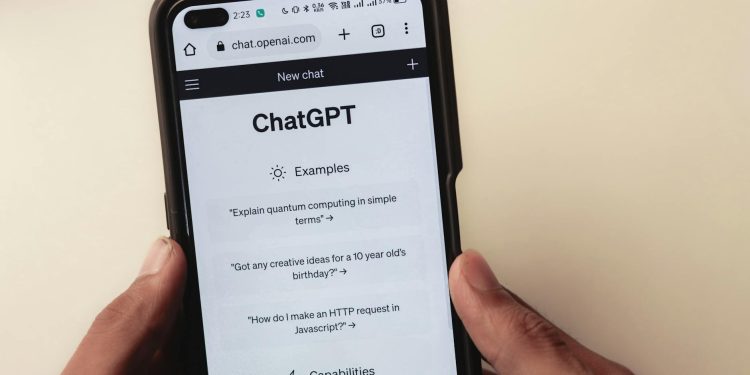Introduction to Prompt Customization for AI Applications
What is Prompt Customization?
Prompt customization is all about tweaking the input phrases for AI systems to get the best possible results. By fine-tuning these prompts, you can lead AI to spit out more spot-on, relevant, and context-aware outputs. This method is key to teaching AI how to behave, whether it's in chatbots, cranking out content, cooking up images, or anything else you can think of in AI-land.
If you're curious to find out more, check out prompt manipulation in generative AI for a deeper dive.
Why Prompt Engineering is a Big Deal in AI
Prompt engineering is like the unsung hero in AI world. It’s all about cooking up the perfect prompts to get AI doing what you want. Here's why it matters:
-
Accuracy: Nailing the prompts minimizes misunderstandings and gets AI to give you the right stuff.
-
Relevance: Making prompts fit ensures the AI hits the mark with what's needed for a specific job.
-
Efficiency: Fine-tuning prompts means spending less time fixing stuff yourself after AI misfires.
-
Adaptability: Good prompt engineering lets AI roll with the punches, making it handy for different gigs.
For tips to get better AI results with prompt engineering, check out prompt design for better AI performance.
| Benefit | What's in it for you? |
|---|---|
| Accuracy | Makes sure AI is hitting the bullseye with its answers. |
| Relevance | Keeps AI output on track with what you're looking for. |
| Efficiency | Takes away the hassle of having to correct AI's mistakes later on. |
| Adaptability | Lets AI swap hats easily to suit different needs and jobs. |
Wanna dig deeper into how prompt tweaks can change AI's game? Swing by understanding prompt influence on AI behavior and optimizing prompts for AI algorithms.
By cracking the code of prompt customization, you can really boost how AI apps work for you. Whether you're in IT, hitting the books, or running the business show, getting good at this can give you a leg up in the fast-moving world of AI.
Key Concepts to Understand
Generative AI and its Applications
Generative AI is like having a super-creative machine that spits out content all on its own. Whether it's whipping up snazzy texts, dreamy images, or catchy tunes, this tech is pretty versatile. Generative AI works using models to dream up new stuff nearly indistinguishable from the human touch, which is quite mind-blowing.
These clever AI buddies depend on prompts to figure out what kind of magic you need. Tweak those prompts just right, and you'll be amazed at the tailored masterpieces the AI can create.
| Application | Description | Examples |
|---|---|---|
| Text Generation | Spins out text from prompts | Articles, Tales, Chat Replies |
| Image Creation | Crafts images from text instructions | Art, Prototype Designs, Avatars |
| Music Composition | Whips up music with given specs | Background Melodies, Soundtracks |
For more info on how to work with prompts like a pro, check out our guide on generative ai prompt techniques.
Role of Prompt Design in AI Development
Prompt design is like giving directions to a lost tourist: the better you explain, the better results you'll get. When done right, the AI nails it with content that's spot-on and match-ready for your needs. It's all about setting up those input prompts with care to hit your goals.
Here’s what makes a great prompt:
- Clarity: Keeping it crystal clear
- Context: Tossing in some backstory
- Specificity: Getting right down to the nitty-gritty
- Flexibility: Open to trying stuff and tweaking
Want to know how to dial in your AI's performance with nifty prompt design? Dive into our piece on prompt design for better ai performance.
Bringing generative AI into your world demands getting cozy with these concepts. They'll keep you on the path to making the most out of your AI adventures. Different AI models have their quirks, so remember to adjust according to what you’ve got going. For a more detailed exploration of using and perfecting AI prompts, check out our section on prompt-driven ai development strategies.
Strategies for Effective Prompt Customization
Tinkering with AI can be like adjusting the volume on your favorite song—you want to hit that sweet spot where everything just clicks. Here's a quick guide to making your AI do what you need with those golden prompts.
Get Your Goals Straight
First things first—what do you want from your AI? If your plans are as clear as mud, so will your results be. Nail down what you're trying to do and the kind of input you'll be feeding into the mix. Here’s what you should think about:
- Get Specific: If you're dreaming it, you can measure it. Pin down what success looks like so you can see if you're hitting the mark.
- Nail the Input Details: Figure out exactly what type of info you're shoving into the AI’s brain. Make sure your input vibes with your goals.
- Sketch an Input-Output Map: Create a sort of treasure map linking your inputs to the outputs you want. This helps in guiding the AI effectively.
| Objective | Example Input | Expected Output |
|---|---|---|
| Text Generation | "Craft a story on an interstellar quest." | A 500-word epic tale |
| Image Recognition | Picture of a parrot | "Parrot" |
| Sentiment Analysis | "This smoothie is incredible!" | Positive rating |
For more wisdom on this topic, check out our article on prompt curation for ai models.
Picking the Right AI Model
Not all AI models are born equal—some have the smarts for storytelling, others for crunching quick data. Choosing the right one boils down to knowing what each model can do and matching it to your needs.
Here’s what to consider:
- Know What It’s Good At: Each model has its quirks. Some are poets at heart, while others crunch data like a boss. Do your homework.
- Scope Out Its Training: The model's brainpower depends on what it's been trained on. Look for one that's been exposed to a rich variety of data.
- Size and Speed Matter: Bigger might be better for accuracy, but it can slow you down. Find a balance between performance and practicality.
| Language Model | Superpowers | Best Suited For |
|---|---|---|
| Model A | Stellar at spinning yarns | Crafting engaging stories |
| Model B | Speed demon with good enough accuracy | Snappy chat operations |
| Model C | Sherlock Holmes of queries | Deep research tasks |
For more tips on how to choose, dive into our article on prompt selection for ai language models.
Spot on goals and the right model are your secret ingredients for successful AI prompt tuning. Use these strategies to beef up your AI game and squeeze out every last drop of potential from your digital whiz.
Best Practices for Successful Prompt Creation
Crafting killer prompts for AI isn’t magic; it’s all about choosing the right words, thinking through the context, and tweaking things until you get it just right. Here, we’ll lay out some tips to help you create prompts that hit the mark and use feedback to make them even better.
Crafting Specific and Contextualized Prompts
When talking to AI, being crystal clear pays off. Good prompts are like good directions—they tell the AI exactly what you want, with no room for guesswork.
- Be Specific: Spell out exactly what you’re looking for. Clear instructions help the AI hit the bullseye.
- Set the Scene: Give the AI some background. Describe scenarios, toss in examples, or lay down guidelines to get the context just right.
- Mind Your Words: Use language the AI can relate to. Jargon’s cool if the AI gets it, but otherwise, keep it simple.
Check out these sample prompts for writing tasks:
| Prompt Type | Example Prompt | Expected Outcome |
|---|---|---|
| Vague | "Write a story." | Aimless storyline |
| Specific | "Write a 300-word mystery story set in a haunted house." | Precise, tidy mystery tale |
| Contextualized | "Write a 300-word mystery story set in a haunted house, with a surprise at the end." | Specific, intriguing mystery with a twist |
For more on writing clear prompts, pop over to our piece on prompt crafting for generative algorithms.
Utilizing Feedback Loops for Iterative Improvement
Feedback is like your GPS for tweaking prompts—continuous adjustments lead to better results. Here’s how you can loop in feedback and level up your prompts.
- Gather Reactions: After the AI spits out its stuff, get opinions from users or use analytics to see how well the prompts are working.
- Crunch the Numbers: Spot repeating problems. Figure out if the prompts are too vague, missing context, or off-track.
- Tweak the Prompts: Use what you’ve learned from feedback to tighten up the wording, details, or context in your prompts.
Here’s how you refine a prompt for a chatbot:
| Iteration | Initial Prompt | Feedback | Refined Prompt |
|---|---|---|---|
| 1 | "Tell me about AI." | Too broad | "Tell me about the benefits of AI in healthcare." |
| 2 | "Tell me how AI is used in healthcare." | Needs more detail | "Explain three benefits of AI in diagnosing diseases in healthcare." |
| 3 | "Explain three benefits of AI in diagnosing diseases in healthcare." | Spot on | N/A |
Looping feedback into your process results in prompts that are both on the money and rich with context, boosting the AI’s game. Dig into more tactics with our guide on prompt design for better AI performance.
Grasp these tips, and you’ll boost how well your AI churns out accurate, spot-on, and top-quality responses. Dive into our other articles on AI prompt mastery to fine-tune your AI projects even further.
Implementing Custom Prompts in AI Applications
Making Custom Prompts Fit Your AI System
Get ready to mix the unique prompts into the AI stew! First thing first, you've got to make sure these prompts fit like a glove in your existing setup. You want them to vibe with what's already ticking.
-
Spot the Best Opportunities
Go on a treasure hunt in your system and identify the golden spots where these prompts can really shine. Think about the AI's interactions with users or how it gets its job done. -
Bridge the Techy Gap
Make sure those prompts get along with your system's brain — the models and algorithms. You might need to tweak a bit of code or juggle some data to get things purring smoothly. -
Trial Run, Baby Steps
Before diving headfirst, start with a tiny trial run. Throw these prompts into a safe test environment to see how they behave. Gather some honest opinions. -
Go Big or Go Home
Once you're happy with the trial, turn up the notch and spread these prompts across your system. Keep an eye on it, make sure it's running as smooth as your morning coffee.
For more details on making custom prompts groove with your AI, take a look at our piece on prompt integration in AI systems.
Tweaking and Perfecting Your Custom Prompts
Sweet — you’ve got those prompts in, but now we have to make them sing. This involves some good ol’ testing and taking a listen to what humans have to say.
-
Automate Your Test Runs
Use automated testing to see how prompts perform in various situations. This is like putting them through a drill to ensure they don’t act shady. -
Hear it from the Crowd
Ask users what they think about the AI's responses. Use this real input to polish and enhance the prompts. -
Keep a Close Watch
Keep tabs on how the prompts perform over time. Check out things like user vibes, answer accuracy, and overall machine mojo.
| Metric | Tool Used | Check Frequency |
|---|---|---|
| Are Users Happy? | Surveys, Feedback | Monthly |
| How Sure are the Answers? | Automated Accuracy Test | Always |
| Are Things Flowing? | Monitoring Tools | Daily |
- Tweak, Tweak, Repeat
Based on what you learn from the team and machines, keep tweaking those prompts. This might mean tiny tweaks or giving them a total makeover.
Curious about testing methods? Dive into our article on fine-tuning prompts for specific AI outputs.
By sliding in and tweaking custom prompts just right, your AI app can become a whole lot sharper and more on point. For more deep dives into prompt tweaks, jump into our full articles on prompt manipulation in generative AI and optimizing prompts for AI algorithms.
Customizing Prompts for Better AI Fun
Making AI Smarter with Custom Prompts
Using custom prompts is like giving AI a nudge in the right direction. You get the AI to spit out more accurate and relevant stuff by crafting prompts that fit your specific needs. It's like telling a joke to someone who actually gets your sense of humor—the better the setup, the better the punchline.
Picture this: you tailor a prompt with just the right details your AI buddy needs, and boom! You get answers that fit your demands. Whether it's generating a text, whipping up images, or translating languages, a well-thought-out prompt can cut through the fog, helping AI churn out responses that hit the mark.
By planning prompts with clear goals, AI's less likely to wander off-topic. Check out some articles we’ve cooked up, like how to craft prompts for arty AI magic and setting the scene for chatbot conversations, and get those bots talking sense.
Everyday Wins with Smart Prompting
Playing around with prompts isn’t just some fluffy experiment; it really shakes things up in the real world. From sprucing up businesses to getting creative juices flowing, prompt tuning lets AI do some pretty cool stuff.
Take a look at businesses: by using snazzy prompts, AI can smooth out customer chats, get behind-the-scenes tasks running slicker, and crunch numbers more accurately. This means folks get the right answers faster, and we get a clearer picture from the data. Check out our piece on AI built with prompts in business to see how it plays out.
The artsy types also get a kick out of custom prompts—storytelling becomes a breeze, and content flows better when the AI knows what themes or vibes it should go for. In the world of design, prompt tuning helps dream up images that pop. Dive into making stories with AI and molding prompts for pretty pixels if you’re curious.
Some bonuses from prompt engineering include:
| Area | Benefit Revelation |
|---|---|
| Customer Queries | Snappy solutions |
| Number Crunching | Data gets decoded better |
| Crafting Content | Get those creative reads |
| Tongue Twister Translation | More brainy translations |
| Creative Corner | Sparkling new visuals |
Tuning prompts doesn’t just jazz up AI results; it helps hit business goals and unlocks creative doors. By focusing your prompts, you let AI do what it does best—work wonders for exactly what you need. Peek at our exploration of mapping prompts for all sorts of AI tricks to get the lowdown on how this all works.










